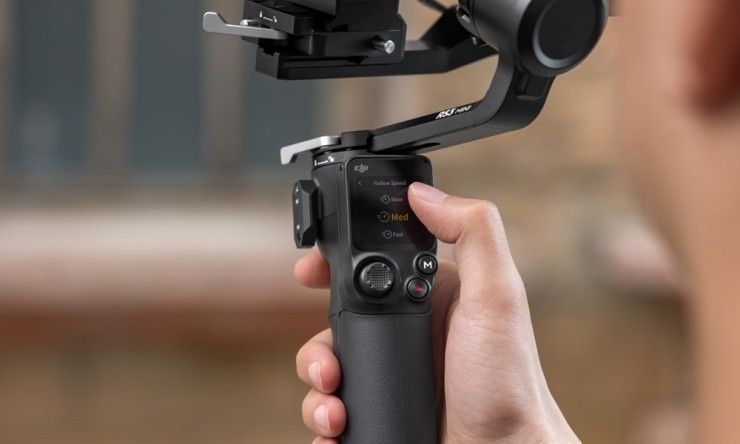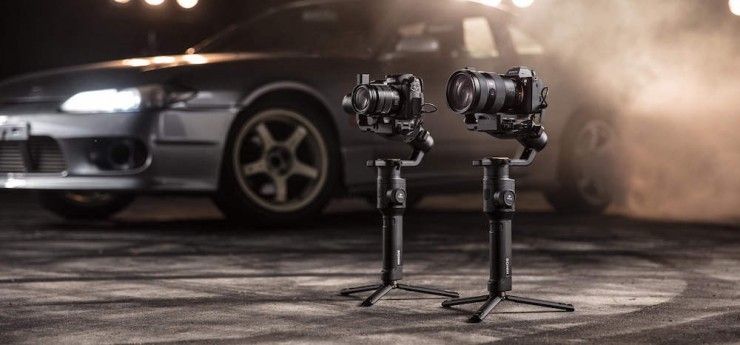
The new "Travel Gimbal" size designed for use with mirrorless and lighter DSLR cameras is here! This is what you need to know...
The first major camera gimbal that change the game came from Freefly Systems in 2013 with their MōVI line of camera gimbals. With each passing iteration of MōVI's gimbal design, the camera stabilizer became more powerful. Over the last ten years, camera gimbals have become ubiquitous in our industry as more compact and powerful tools continue to evolve image stabilization hardware.
Now, DJI has one of the strongest footholds on the gimbal market due to their affordability and usability.
Now, a new gimbal has arrived. Designed to support modern mirrorless cameras, the DJI RS 3 Mini is a compact rig that aims to provide that Steadicam composition at a fraction of the weight.
More Movement While On The Move
DJI has dominated the one-handed camera gimbal market for the last four or five years, and its latest RS 3 Mini handheld travel gimbal offers the strength of supporting DSLR and Mirrorless camera payloads of four times its own weight. The RS 3 Mini is the latest effort by DJI to bring their higher-end products into the prosumer/consumer space with a “mini” version that is smaller and more affordable.
Weighing at around 1.8 pounds (800g), which is 40 percent lighter than the RS 3, the RS 3 Mini can shoulder camera payloads of up to 4.4 pounds (2 kg). This enables users to use a mirrorless camera combination with zoom lenses attached of 24-70 mm. For a full list of compatible cameras, check out this handy list.
Using the same third-generation stabilization algorithm found on the professional RS 3 Pro gimbal, the RS 3 Mini is capable of native horizontal and vertical image stabilization while shooting in a variety of mobile-centric camera situations. The camera is capable of switching from running and gunning to a low angle or flashlight mode without any reconfiguration thanks to DJI’s dynamic 360° rotation imaging scheme.

The camera can also be mounted vertically on the RS 3 Mini for social media-centric vertical video because of a newly designed dual-layered quick-release plate that can be mounted to the vertical shooting arm without the need for additional tools, accessories, or rebalancing. Moreover, the gimbal's rotation angle is not limited compared to a more traditional vertical mode on competing gimbal designs or previous DJI models.
DJI also says that the RS 3 Mini has intuitive control options that provide professional-grade image stabilization, regardless of the experience of the camera operator. It has a 1.4-inch color touchscreen with an M-mode button to switch between the gimbal’s three different custom stabilization modes.

The gimbal can also sync with mirrorless and certain supporting DSLR cameras via Bluetooth, so users can control shutter functions and record video or capture still images with the touch of a button. Sony users can directly control their lens’ optical or digital zooming as well, without the need for a camera control cable.
The other option for adjusting the RS 3 Mini’s camera features is through a Wi-Fi connection to the DJI Ronin mobile app, which has access to what DJI says is a “wealth of smart shooting functions,” including Time-Lapse, Track recording, and Panorama shooting.

The RS 3 Mini also has an impressive battery life of up to ten hours of nonstop shooting through its battery handle. The handle takes up to 2.5 hours to recharge and can be used during charging.
Lastly, NATO connections enable the RS 3 Mini to add external microphones, video lights, or DJI’s suitcase handle for underslung video capture of low angles.
Pricing and Availability
The DJI RS 3 Mini is available now for $369 through DJI's website or through authorized retailers. There is also an optional comprehensive protection plan through DJI Care Refresh, which can offer a replacement in the event of accidental collisions or water damage. Users can also take the RS 3 Mini for a test run through the SkyPixel Program.

Your Comment